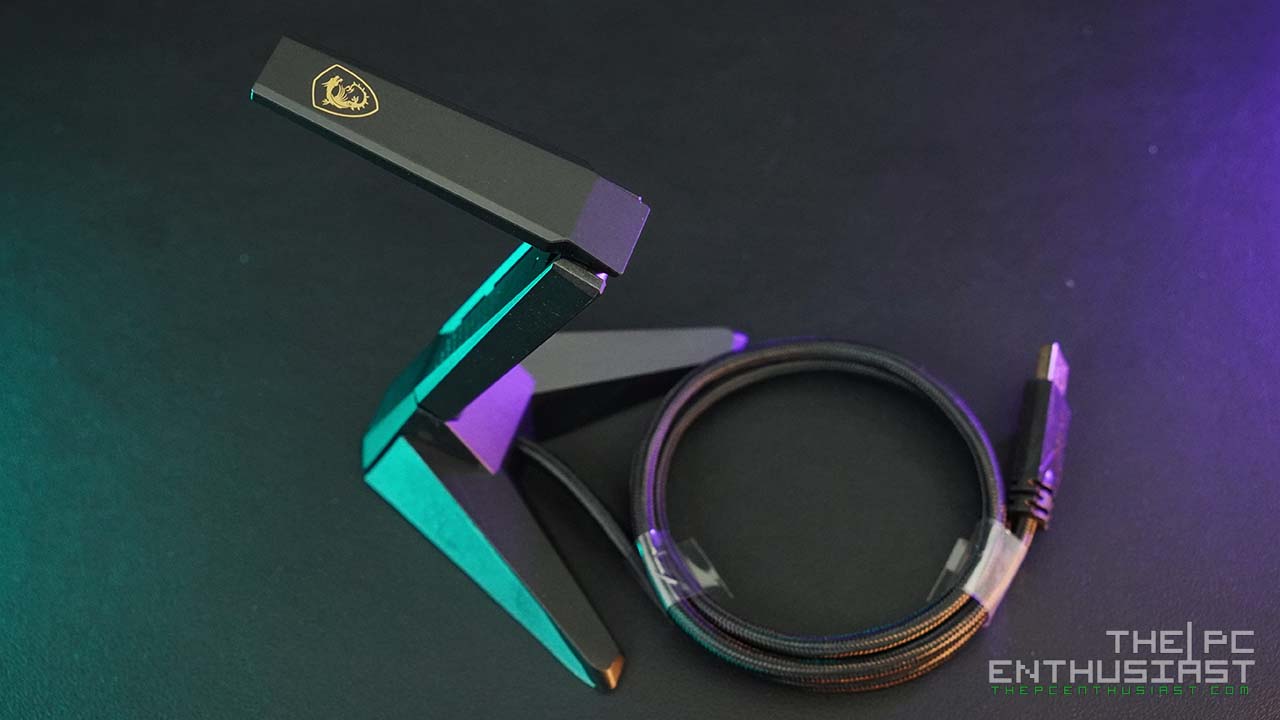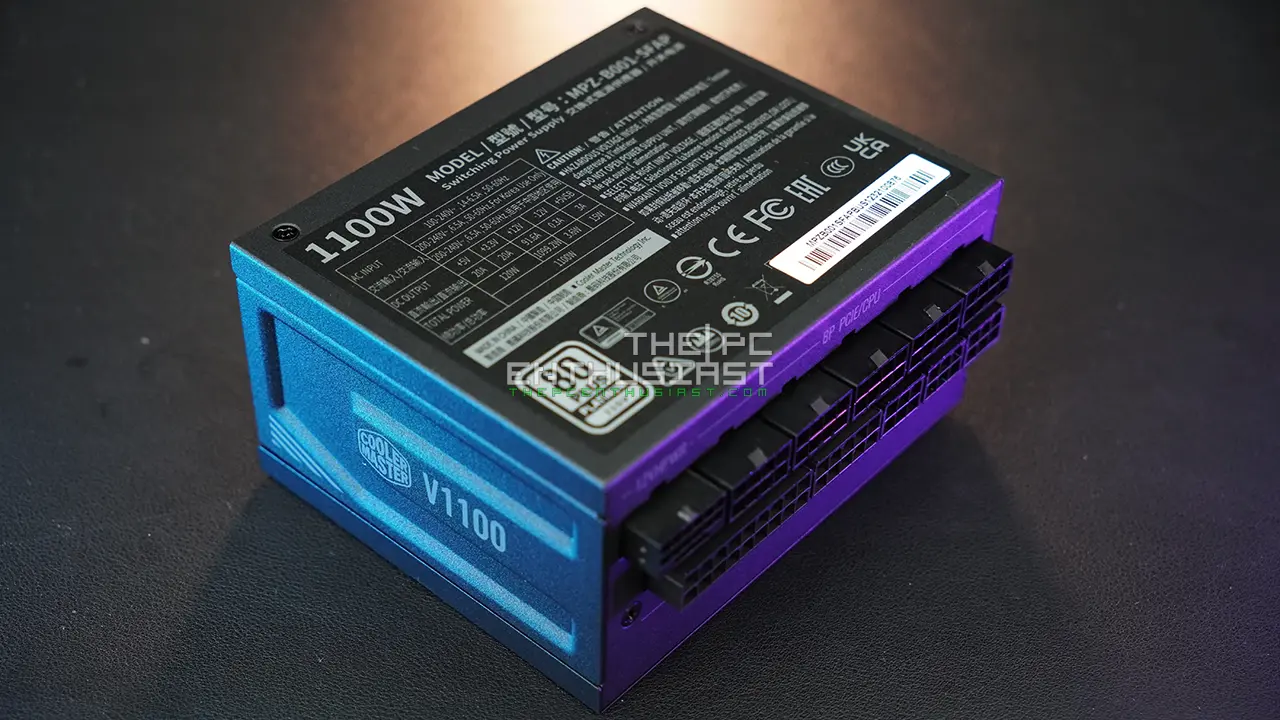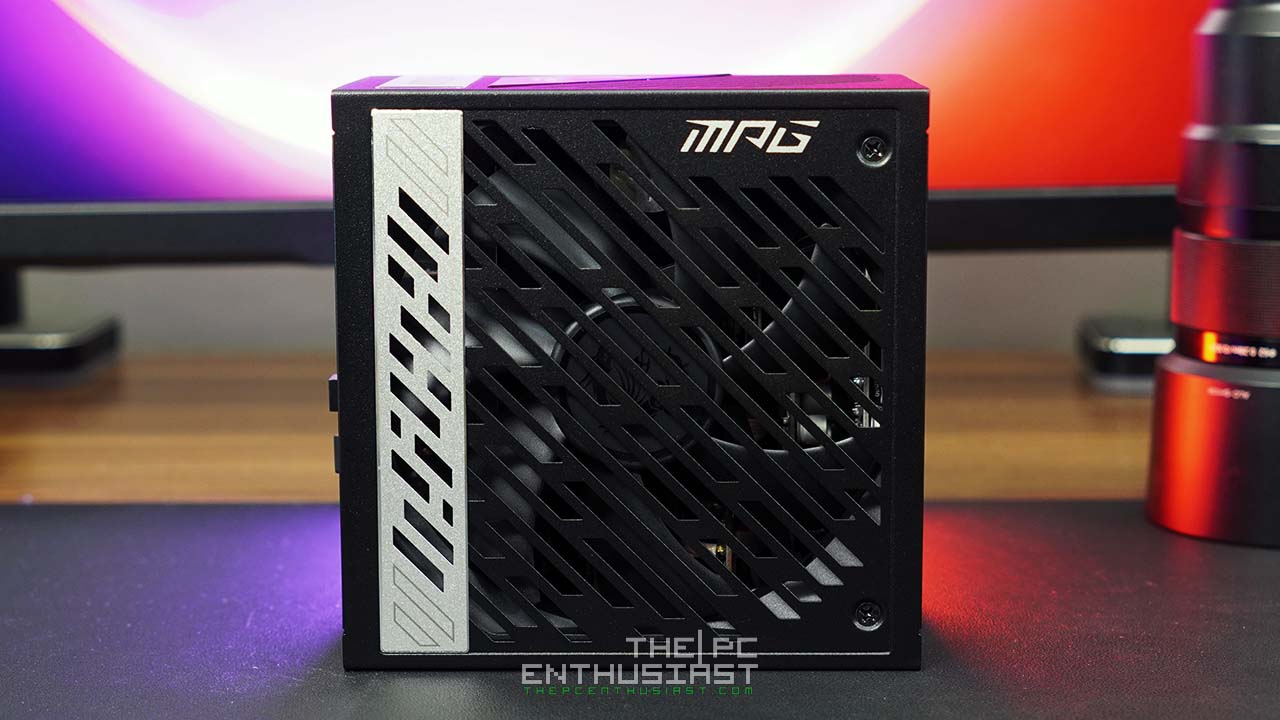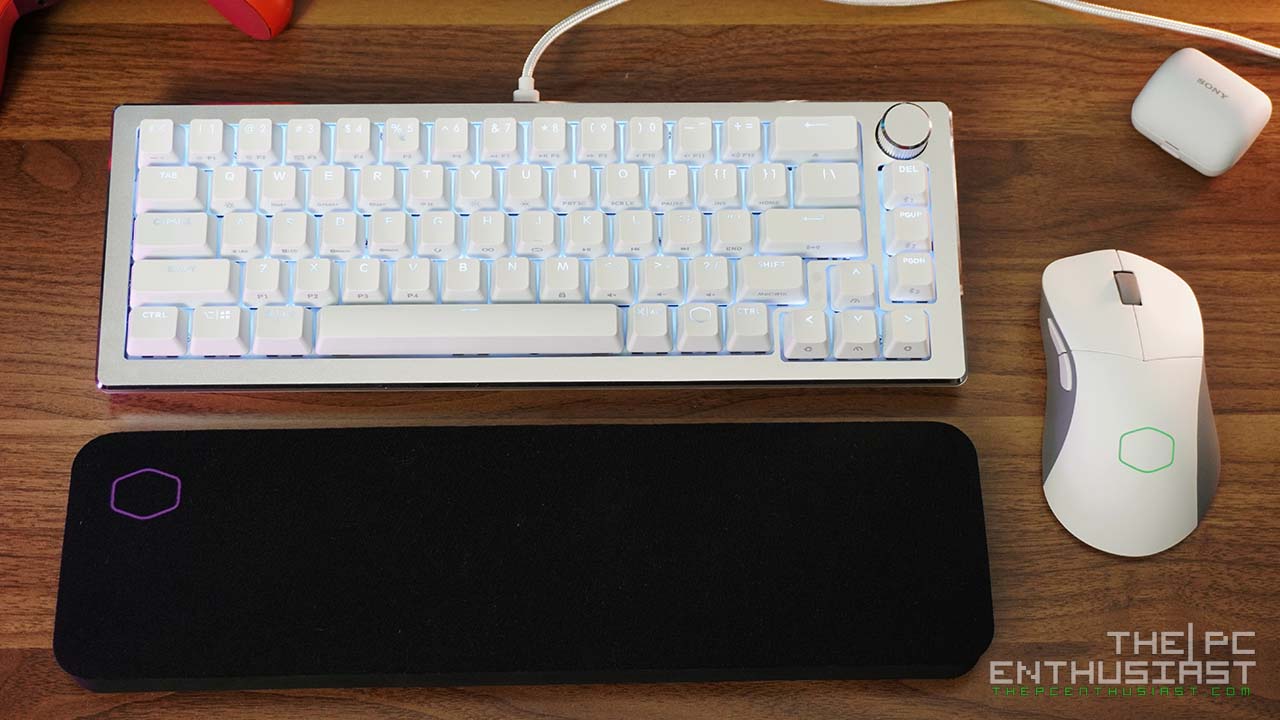NVMe M.2 SSD enclosures are common these days. There are a lot of solution out there that turns your internal M.2 SSD into an external one. However, most of the M.2 enclosures available in the market today are limited to up to 10Gbps of the theoretical speed only; effectively bottlenecking an NVME SSD’s performance. SilverStone has a solution to that. In today’s review, we are going to check out the Silverstone MS12 NVMe M.2 SSD enclosure that is capable of up to 20Gbps speed. Also, I’ll be using the SilverStone ECU06 USB 3.2 Gen 2×2 PCIe expansion card to take advantage of the 20Gbps speed. Check out the results we got in the review below.


SilverStone MS12 with ECU06 Review – 20Gbps SuperSpeed+ via USB Type-C
The SilverStone MS12 is an M.2 SSD enclosure that features USB 3.2 Gen2x2 Type-C interface. It offers speeds of up to 20Gbps, which is twice faster than most M.2 enclosures in the market today. And it supports various M.2 lengths namely: 22x42mm, 22x60mm, and 22x80mm.
It also supports various features like BOT and UAS protocols; TRIM support; SCSI translation reference rev 1.5; NVMe error reporting and recovery; and S.M.A.R.T drive monitoring. It is also compliant with PCIe base specification 3.1a and NVMe base specification 1.3c.
I’ll discuss more when we take a closer look at the MS12 below. Meanwhile, let’s talk about the SilverStone ECU06 because this PCIe expansion card plays an important role as well.
Treat Your Motherboard With A USB 3.2 Gen 2×2 Type-C Interface
The SilverStone ECU06 is a PCIe Gen3 x4 expansion card that offers up to 32GT/s of theoretical speed via a USB Type-C interface. This is not Thunderbolt and this is faster than the USB Type-C 10Gbps connectivity found in most motherboards today.
USB 3.2 Gen2x2 Type-C is (usually) not found in previous and older generations of motherboards. Currently, only the newly released Intel Z590 motherboards have native support for the USB 3.2 Gen 2×2 interface. This means, most (if not all) Z590 motherboards have a USB Type-C (20Gbps) connectivity at the rear I/O port. So, an expansion card like the ECU06 won’t be needed with those newer motherboards.
The problem is, majority of the motherboards today don’t have a USB Type-C (20Gbps) connectivity yet. So to take full advantage of the MS12’s speed, you’ll need an expansion card like the ECU06. Also, there are portable SSDs in the market, like the new SanDisk Extreme PRO Portable SSD V2 that is capable of up to 2,000MB/s sequential speeds. With the ECU06, you’ll be able to take advantage of its speed as well.
I’ll show benchmark results below comparing the various speeds when connected to the different interfaces. In the meantime, below are the full specifications of the MS12 and ECU06. After that, let’s take a closer look at both products. Then let’s see some numbers.
SilverStone MS12 NVMe M.2 Enclosure Specifications
| Model No. | SST-MS12 |
| Color | Black |
| Connector | ASMedia ASM2364 |
| Material | Aluminum |
| Application | USB 3.2 Gen2x2 Type-C NVMe M.2 SSD |
| Transfer interface | 20Gbps USB 3.2 Gen2x2 Type-C |
| LED indicator | Powered: Solid Blue Data access: Blinking Blue |
| Drive interface support | PCIe Gen3 x4, NVMe 1.3 |
| USB Cable length | 300±15mm |
| Net weight | 53g |
| Dimension | 106.15mm (W) x 15.3mm (H) x 33.3mm (D) 4.18″ (W) x 0.6″ (H) x 1.31″ (D) |
| Thermal conductivity | 2W/m.k |
| Operating Temp. | -40 °C ~ 220 °C |
| Dimension | Gray: 60 mm (W) x 0.5 mm (H) x 20mm (D) – pre-installed Gray White: 60 mm (W) x 1.5 mm (H) x 20mm (D) – pre-installed Blue 1: 60 mm (W) x 1 mm (H) x 20mm (D) Blue 2: 60 mm (W) x 2 mm (H) x 20mm (D) |
SilverStone ECU06 SuperSpeed 20Gbps USB Card Specifications
| Model No. | SST-ECU06 |
| Power requirement | PCI Express bus power |
| Form factor | Low profile – PCI Express Gen 3 x4 (32GT/s) |
| USB Ports | USB 3.2 Gen 2×2 Type-C port. |
| USB 3.2 controller | ASMedia ASM3242 |
| Transmitting Speed | USB 3.2 Gen 2×2 (20Gbps), USB 3.2 Gen 2×1 (10Gbps), USB 3.2 Gen 1 (5Gbps), USB 2.0 (480Mbps), USB 1.1 (12Mbps) |
| Operating system support | Windows 8-10, Windows Server 2016-2019, Mac10.X, Linux OS* in-box xHCI driver natively support UASP, no additional driver required |
| Power Management | Support USB 3.2 and USB 2.0 link power management |
| Extra | UASP and Multiple INs function |
| Current protection | Support over current detection |
| Operation Temperature | Operating temperature range: 0 ~ 85 ºC Storage temperature range: -20 ~ +70 ºC Humidity range: 5 ~ 95% RH |
| Net weight | 47g |
| Dimension | 123mm (W) x 21mm (H) x 105mm (D) 4.84″ (W) x 0.83″ (H) x 4.13″ (D) |
Packaging and Closer Look – MS12 Enclosure



The MS12 comes in a white and blue-themed box. Most if not all of the features are printed on the box. The package includes a USB Type-C data cable; a small hex-screw driver; 4 extra hex screws; extra thermal pads, and the MS12 itself.
I find the included Type-C data cable to be on the short side. But I noticed that most manufacturers do include a shorter USB cable for these types of products; including external portable SSD drives like the Crucial X8. It would be nice if it’s a bit longer.



The SilverStone MS12 is made of aluminum and the construction is sturdy and robust. There are holes for the USB Type-C port and a tiny hole for the LED indicator. As you can see from the photos above, the MS12 has a rugged design and looks like the whole body is a heatsink for an M.2 SSD.
Unfortunately, the MS12 does not feature a tool-less design. The 4 hex screws are (very) small and easy to lose or misplaced. There are a total of 8 hex screws, four on each side. But you only need to remove one side and gently slide the PCB out. You can remove both covers if you are having difficulty in installing the M.2 SSD.
About the ASM2364 Controller
The MS12 uses ASM2364 controller chip as seen from the photo below. “It is ASMedia’s second generation PCI Express to USB3.2 device controller, featuring PCI Express Gen3 x4 and one USB3.2 Gen2x2 device port, providing high bandwidth up to 20Gbps between PCI Express Gen3 x4 bus and USB 3.2 SuperSpeedPlus bus. It uses for external driverless USB3.2 Gen2 NVM Express SSD application, supporting PCI Express M.2 socket and SSD U.2 form factor, compliant with NVM Express revision 1.2.1, USB3.1 Revision 1.0 and PCI Express Base Spec Revision 3.1.“





Installing an M.2 SSD was not difficult, but not that easy as well. I fear that people would damage the PCB, especially those who are not familiar with handling sensitive components like these. It would be nice if it’s a tool-less design where you just insert and lock the M.2 SSD. Though, it would be difficult to accomplish such a design if the enclosure is supporting 3 different sizes.
To install an M.2 SSD, you will have to remove the PCB out of the heatsink. The big golden circle that locks the M.2 SSD in place doesn’t have any grooves. Instead, you will have to unscrew it from the other side. You will need a small Phillips screw to remove it.
In my opinion, it’s best to stick with one M.2 SSD and leave it there; since installing and removing the drive is quite an arduous task. Although, your mileage may vary; especially if you are used to handling (small) sensitive components or parts.
Packaging and Closer Look – ECU06 Expansion Card


The SilverStone ECU06 is simply a PCIe expansion card and gives you access to 20Gbps of transfer speed via a USB Type-C interface. The box includes the ECU06 card itself and a low profile slot cover for slimmer chassis.


The ECU06 is a plug-and-play device and you only need a PCIe x4 slot, or higher, for it to work. However, according to SilverStone, the “user should confirm which OS version supports xHCI driver natively.” Also, if the motherboard didn’t detect or recognize the ECU06 you may need to update the motherboard’s BIOS.
In my case, I was not able to make the ECU06 work with the MSI Z490 GODLIKE motherboard. This was a head-scratcher for me; it was quite disappointing that a very expensive motherboard doesn’t support or didn’t recognize the ECU06. Fortunately, my MSI MEG X570 ACE motherboard was able to detect and recognize the ECU06.


The SilverStone ECU06 features the ASMedia ASM3242 Universal Series Bus xHCI host controller. It bridges PCI Express to USB3.2 20Gbps, compliant with USB3.2 Specification Revision 1.0 and Intel eXtensible Host Controller Interface specification revision 1.1. It also supports backward compatibility with legacy USB function and devices, compliant with USB Attach SCSI Protocol revision 1.0, supporting the function of debug port on USB3.2 port.
SilverStone MS12 + ECU06 Benchmark Results
In testing the SilverStone MS12 M.2 enclosure and ECU06 USB3.2 Gen2x2 expansion card, I used a Crucial P5 NVMe M.2 SSD 2TB capacity. This drive has a rated speed of up to 3,400MB/s and up to 3,000MB/s sequential read and write speeds respectively.
This also means that the Crucial P5 will be limited to up to 2,000MB/s read/write speed since the MS12 and ECU06 can only accommodate up to 20Gbps of transfer speed. Still, better tha n other solutions that only offer up to 10Gbps, where you lose two-thirds of the drive’s speed.
I also added the data I got with the SanDisk Extreme PRO Portable SSD V2. It’s capable of sequential speeds of up to 2,000MBs. Finally, I added the results I got when I benchmarked the Samsung 870 EVO SATA SSD and WD Red PRO HDD for reference and comparison.
AJA System Test Benchmark Results

As you can see from the graphs above, you can see that the P5 can achieve around 2,800MB/s read and 2,500MB/s write in the AJA System Test benchmark. This is when the drive is directly installed on the motherboard. When installed on the MS12 and connected to a 20Gbps port, its speed is reduced to around 1,700MB/s and 1,800MB/s respectively.
However, when you use an NVMe SSD and connect it to a 10Gbps USB Type-C port, the speed is significantly reduced to around 900MB/s only. The same scenario can be said for the SanDisk Extreme Pro Portable SSD V2.
AS SSD Benchmark Results


In AS SSD benchmark, we can see a similar pattern. Notice that the Crucial P2 is an entry-level NVMe SSD. Its rated speed is only up to ~2,400MB/s. So, I guess using an entry-level SSD would be enough for these external enclosure solutions. No need to spend extra money on a faster SSD; since you can’t take advantage of the full speed anyway. Not unless you have plans on using the M.2 SSD for both internal and external use.
ATTO Disk Benchmark Results

In the ATTO Disk benchmark we can see the maximum speed a storage drive can achieve. Again, you can see that a 20Gbps-capable external drive should be connected to a 20Gbps port to maximize speed. Connecting it to a USB Type-C 10Gbps reduces the speed significantly.
CrystalDiskMark Benchmark Results


ezIOmeter Benchmark Results


The same story can be said with the CrystalDiskMark and ezIOmeter sequential benchmark results. The numbers that I got are more or less similar to the other benchmark tests. Only in the 4K random tests where we can see some (huge) differences.
Somehow, the speed reduction when doing random read/write workloads is quite significant compared to sequential workloads. For example, the P5 has a random read/write speed of 1700MB/s and 1900MB/s respectively. But it’s significantly reduced to around 270MB/s via the MS12 and ECU06. Perhaps this is one limitation of the ASMedia controller.
Pricing and Availability
Both the SilverStone MS12 NVMe M.2 SSD enclosure and ECU06 USB-C 3.2 Gen2x2 expansion card are now available. At the time this review was published, both products are listed with a retail price of $70 for the MS12 and $74 for the ECU06. I’m not sure if these are the manufacturer’s suggested retail prices though. For the latest pricing and availability, kindly check out the links below.
SS-MS12 M.2 enclosure available on Amazon.com here
SS-ECU06 USB-C 20Gbps expansion card available on Amazon.com here
SilverStone MS12 M.2 Enclosure and ECU06 USB Card Review Conclusion
You have seen the benchmark results and as you can see both the SilverStone MS12 M.2 enclosure and EC06 USB-C Gen3.2 2×2 20Gbps expansion card were able to perform well as expected. I was able to get around 2,000MB/s of sequential speed; as expected from a 20Gbps connectivity.
I don’t have any major issues to point out. Although the random read/write speeds are quite slow despite the bandwidth available. I can only guess that the controller might be the limiting factor.
However, I do have some nitpicks to point out for the MS12. First, the included USB cable is quite short. It would be nice if the USB cable is a bit longer. Second, the LED indicator is located right next to the USB port. This means, most of the time, it is facing away or in the opposite direction. Perhaps it would be better if the LED indicator is located somewhere more visible.
Lastly, I hope SilverStone could develop a tool-less design even if it can only support one size. 2280 is the most common size and is widely available compared to the 2240 and 2260. Perhaps a “slide-in” or “snap-on” tool-less design would be nice. This would be beneficial especially for consumers who are not proficient in handling sensitive components.
Who should buy the MS12 and ECU06?
Newer M.2 NVMe SSDs today have a read/write speed starting 2,000MB/s and up. So if you want to take advantage of the speed or at least most of its speed, the MS12 would be a great solution.
Also, if your motherboard doesn’t have a USB Type-C Gen3.2 2×2 interface that is capable of 20Gbps connectivity; it’s recommended that you get an expansion card like the ECU06. Otherwise, you won’t be able to take advantage of the 20Gbps speed. You’ll be limited to what speed the USB interface can accommodate.
What NVMe M.2 SSD Should You Pair with the MS12?
I haven’t tried all types of SSDs from various manufacturers yet. But the Crucial P5 worked well. I think any Gen3 NVMe SSDs with sequential speeds starting 2,000MB/s would be nice.
Don’t bother using Gen4 SSDs since you will be limited to 20Gbps of speed anyway. Not to mention, Gen4 SSDs are quite expensive compared to Gen3 SSDs.
Entry-level SSDs like the WD Blue SN550 or the Crucial P2 would be ideal since they are rated for around 2,400MB/s of sequential speeds. You won’t lose much performance, not to mention they are some of the cheaper NVMe M.2 SSD options in the market.








